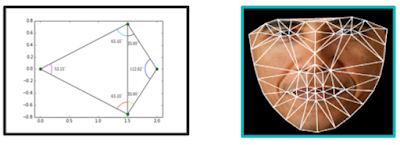Solution: 132 Pattern
132 Pattern
Given an array of n integers nums, a 132 pattern is a subsequence of three integers nums[i], nums[j] and nums[k] such that i < j < k and nums[i] < nums[k] < nums[j].
Return true if there is a 132 pattern in nums, otherwise, return false.
Follow up: The O(n^2) is trivial, could you come up with the O(n logn) or the O(n) solution?
Example 1:
Input: nums = [1,2,3,4] Output: false Explanation: There is no 132 pattern in the sequence.
Example 2:
Input: nums = [3,1,4,2] Output: true Explanation: There is a 132 pattern in the sequence: [1, 4, 2].
Example 3:
Input: nums = [-1,3,2,0] Output: true Explanation: There are three 132 patterns in the sequence: [-1, 3, 2], [-1, 3, 0] and [-1, 2, 0].
Constraints:
n == nums.length1 <= n <= 104-109 <= nums[i] <= 109
Tìm bộ số thỏa mãn 2 điều kiện là: i<j<k và a[i]<a[k]<a[j]
Gọi mảng minArr với minArr[i] là giá trị min trong đoạn (0,i-1), tạo một stack lưu giá trị lớn hơn giá trị minArr hiện thời, bất cứ khi nào stack.top()<=minArr[i] thì đẩy hết stack ra, như thế, ta luôn có:
minArr(i) < stk.top() và vì minArr[i] lưu giá trị min trong đoạn (0,i-1) vậy minArr(i) ở đây chính là a[i], stk.top() là a[k], còn a[j] thì thế nào ?
Vì ta duyệt từ cuối mảng, nên stk.top() luôn nào cũng nằm trước phần tử arr[i], vậy chỉ khi nào stk.top()<arr[i] thì ta sẽ tìm được 1 cặp như vậy.
Chỉ cẩn nhớ: minArr[i] < stk.top() < arr[i].
Sourcecode:
class Solution {
public:
bool find132pattern(vector<int>& nums) {
if (nums.size()<3){
return false;
}
vector<int> minArr(nums.size(),INT_MAX);
stack<int> stk;
for (int i=1; i<nums.size(); i++){
minArr[i] = min(minArr[i-1],nums[i-1]);
}
for (auto i:minArr){
cout << i << " ";
}
cout << endl;
for (int i=nums.size()-1; i>=0; i--){
while (!stk.empty() && stk.top()<=minArr[i]){
stk.pop();
}
if (!stk.empty() && stk.top()<nums[i]){
cout << stk.top() << " " << nums[i] << " " << i;
return true;
}
stk.push(nums[i]);
}
return false;
}
};



Nhận xét
Đăng nhận xét